This digital edition first published in 2016 LOVE FOOD is an imprint of Parragon Books Ltd Parragon Queen Street House 4 Queen Street Bath BA1 1HE, UK Copyright Parragon Books Ltd 2007 LOVE FOOD and the accompanying heart device is a registered trademark of Parragon Books Ltd in Australia, the UK, and the EU. Photography by Gnter Beer Home Economist Stevan Paul Design by Talking Design Introduction and additional recipes written by Beverly Le Blanc ISBN: 978-1-4748-4013-2 10 9 8 7 6 5 4 3 2 1 Copyright 2016 SIL International with Reserved Font Name Gentium Book Basic. Copyright 2016 tyPoland Lukasz Dziedzic with Reserved Font Name Lato. All rights reserved. No part of this publication may be reproduced, stored in a retrieval system or transmitted, in any form or by any means, electronic, mechanical, photocopying, recording or otherwise, without the prior permission of the copyright holder. This book uses imperial, metric, and US cup measurements.
Follow the same units of measurement throughout; do not mix imperial and metric. All spoon measurements are level, unless otherwise stated: teaspoons are assumed to be 5ml, and tablespoons are assumed to be 15ml. Unless otherwise stated, milk is assumed to be whole, eggs and individual fruits such as bananas are medium, and pepper is freshly ground black pepper. Recipes using raw or very lightly cooked eggs should be avoided by infants, the elderly, pregnant women, convalescents, and anyone suffering from an illness. Pregnant and breast-feeding women are advised to avoid eating peanuts and peanut products.
The taste of summer all year round
Take a fresh look at salads and youll see there are a lot of exciting developments in the salad bowl.
Banished forever is the image of salads as dull diet food consisting of little more than limp lettuce and soggy, flavorless tomatoes. Today, salads are one of the ultimate health foods. They can contain an exciting variety of colorful, delicious, and satisfying ingredients that provide the nutrients essential for healthy living. Youll find plenty of inspiration in this book for a cornucopia of healthy salads for all occasions, from light lunches and family meals to stylish dinner parties. And, remember, salads arent just for summer. We have plenty of ideas for salads that brighten and lighten winter mealtimes, too.
In fact, once you get into the habit of thinking salad while menu planning, ideas will also come to you whatever the time of the year as you push your shopping cart along the supermarket aisles or stop at the cheese counter or produce department. Salads are versatile enough to cater for vegetarians and meat-eaters alike. Meat, seafood, and poultry are ideal salad ingredients, along with the perhaps more commonly used lettuce and other leaves, vegetables, fruit, herbs, nuts, seeds, grains, legumes, and cheese. And with so many ingredients to choose from, salads can be as simple and light or complex and filling as you like. They also have the added bonus that they are versatile enough to fit easily into all your meal plans, from first courses through to desserts. As you flip through these recipes youll find classic favoritesCaesar salad, chefs salad, and salad nioise, to name a fewas well as fresh, new ideas that capture the flavors of cuisines around the world.
If, for example, the idea of chicken salad doesnt excite because youve been making the same recipe out of habit for as long as you can remember, try . Youll never think of chicken salad as humdrum again!
Bowls of Goodness
It wasnt long ago that when salads and health were linked it was in the context of weight-reducing diets that were restrictive and ultimately unsatisfying. Today, however, salads are a delicious component of a healthy diet, giving you endless variety at mealtimes without long hours in the kitchen. With fresh produce from all corners of the globe readily available in supermarkets and gourmet food stores, you can enjoy a variety of salads all year round but, remember, salads are at their most flavorsome and nutritious when made with seasonal produce in its prime.


, for example, and youll be more than halfway to success. What could be easieror more enjoyable? Salads also make great accompaniments, served alongside a filling bowl of pasta or a plate of hot or cold roast meat.
So, if you regularly fall back on the old favorite of just tossing a few green leaves with a simple oil-and-vinegar dressing, its definitely time to think again. Its very easy to mix and match ingredients and the choice has never been greater. And dont make the mistake of thinking all salad ingredients have to be raw, either. Adding small amounts of cooked meat, poultry and seafood to lettuce leaves and other vegetables gives you a satisfying meal. If you want a meal-in-a-bowl, try . Cooked vegetables also make good salad ingredients.
Grilled peppers, fried eggplants, blanched beans of all varieties, and peas are just some of the cooked vegetables youll find adding flavor and an extra dimension to the salads in this book.
Colorful Greens
Even with so many ingredients to choose from, salad greens still provide the backbone of many popular salads. Take a look around your supermarket and youll see leaves in many colors and textures, ranging from pearly, pale white Belgian endive to bright red and white radicchio. They also have a variety of flavors, from robust and peppery to sweet, nutty, and mild. The greater the variety of leaves you include in your salad, the more interesting it will be, and the more nutrients it will contain. When you select salad leaves, remember that the darker colored ones, such as spinach leaves, contain more beta-carotene, which help fight some forms of cancer and other illnesses.
Leafy green vegetables are also excellent sources of fiber. Its become very convenient to grab a bag of mixed salad leaves at the supermarket, but it can be more satisfying to sample a selection of greens sold separately at farmers markets. Asian and other ethnic food stores are also a good source of unusual greens. Try these new and familiar greens to add variety to your salad bowl: Arugulaknown for its pronounced peppery flavor, these dark green leaves perk up many salads. Popular in Italian salads. Substitute watercress if you cant find arugula.
Beet greensdistinctive with their ruby-red stems, these soft leaves are mildly flavored. Mchealso labelled as corn salad or lambs lettuce, these tender leaves have a mild, slightly nutty flavor.  Mesclun or mesclumnow sold in supermarkets, this French mix of leaves can include arugula, chervil, dandelion, and oak-leaf lettuce. Just add dressing and toss. Mizunafrom the Far East, this winter green has a full peppery flavor. Its pointy green leaves add visual interest to salads, too.
Mesclun or mesclumnow sold in supermarkets, this French mix of leaves can include arugula, chervil, dandelion, and oak-leaf lettuce. Just add dressing and toss. Mizunafrom the Far East, this winter green has a full peppery flavor. Its pointy green leaves add visual interest to salads, too.
Nasturtiumuse both the colorful flowers and peppery leaves in salads. Radicchiothere is nothing like the bright red and white leaves of this member of the bitter endive family to liven autumn and early winter salads. It has a crisp texture and nutty, peppery flavor. Red chardlike beet greens, these fiber-rich leaves have bright red stems and sometimes the leaves are tinged red as well. Romaine lettuce simply wouldnt be Caesar salad without these long, crisp leaves. 

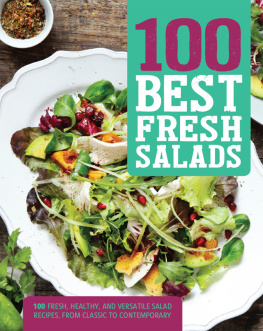
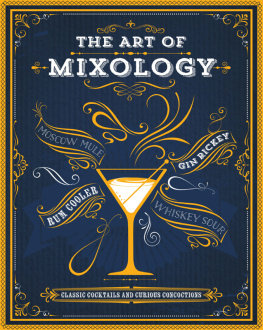

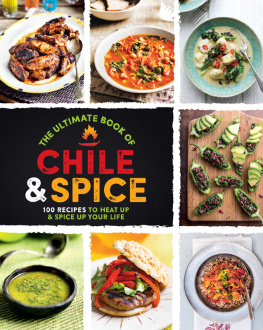
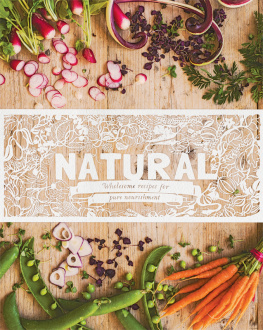


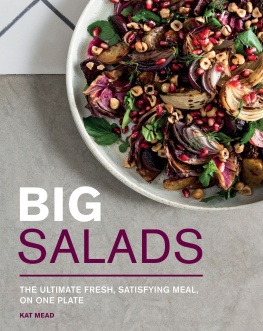
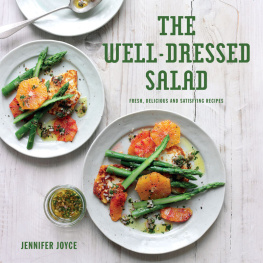
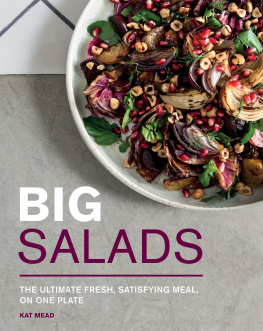
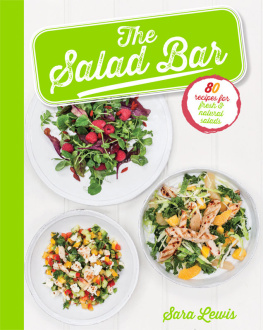
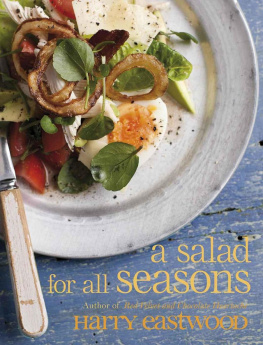
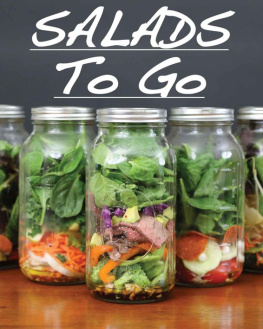


 This digital edition first published in 2016 LOVE FOOD is an imprint of Parragon Books Ltd Parragon Queen Street House 4 Queen Street Bath BA1 1HE, UK Copyright Parragon Books Ltd 2007 LOVE FOOD and the accompanying heart device is a registered trademark of Parragon Books Ltd in Australia, the UK, and the EU. Photography by Gnter Beer Home Economist Stevan Paul Design by Talking Design Introduction and additional recipes written by Beverly Le Blanc ISBN: 978-1-4748-4013-2 10 9 8 7 6 5 4 3 2 1 Copyright 2016 SIL International with Reserved Font Name Gentium Book Basic. Copyright 2016 tyPoland Lukasz Dziedzic with Reserved Font Name Lato. All rights reserved. No part of this publication may be reproduced, stored in a retrieval system or transmitted, in any form or by any means, electronic, mechanical, photocopying, recording or otherwise, without the prior permission of the copyright holder. This book uses imperial, metric, and US cup measurements.
This digital edition first published in 2016 LOVE FOOD is an imprint of Parragon Books Ltd Parragon Queen Street House 4 Queen Street Bath BA1 1HE, UK Copyright Parragon Books Ltd 2007 LOVE FOOD and the accompanying heart device is a registered trademark of Parragon Books Ltd in Australia, the UK, and the EU. Photography by Gnter Beer Home Economist Stevan Paul Design by Talking Design Introduction and additional recipes written by Beverly Le Blanc ISBN: 978-1-4748-4013-2 10 9 8 7 6 5 4 3 2 1 Copyright 2016 SIL International with Reserved Font Name Gentium Book Basic. Copyright 2016 tyPoland Lukasz Dziedzic with Reserved Font Name Lato. All rights reserved. No part of this publication may be reproduced, stored in a retrieval system or transmitted, in any form or by any means, electronic, mechanical, photocopying, recording or otherwise, without the prior permission of the copyright holder. This book uses imperial, metric, and US cup measurements. 
 , for example, and youll be more than halfway to success. What could be easieror more enjoyable? Salads also make great accompaniments, served alongside a filling bowl of pasta or a plate of hot or cold roast meat.
, for example, and youll be more than halfway to success. What could be easieror more enjoyable? Salads also make great accompaniments, served alongside a filling bowl of pasta or a plate of hot or cold roast meat.  Mesclun or mesclumnow sold in supermarkets, this French mix of leaves can include arugula, chervil, dandelion, and oak-leaf lettuce. Just add dressing and toss. Mizunafrom the Far East, this winter green has a full peppery flavor. Its pointy green leaves add visual interest to salads, too.
Mesclun or mesclumnow sold in supermarkets, this French mix of leaves can include arugula, chervil, dandelion, and oak-leaf lettuce. Just add dressing and toss. Mizunafrom the Far East, this winter green has a full peppery flavor. Its pointy green leaves add visual interest to salads, too.